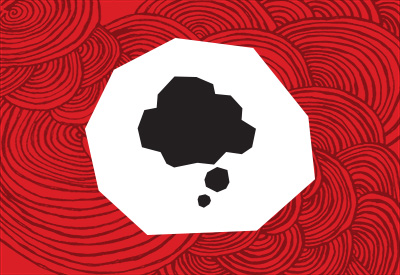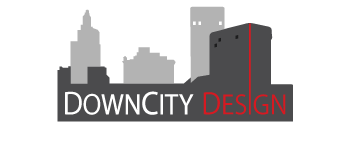Designed to offer multiple pathways through the Design Thinking process, the following activities can stand alone, or be used as part of a sequence to guide a group of learners through a problem-solving process. You can find suggested pathways for Place-Based, People-Based, and Team-Building challenges in the User Guide, or choose from the activities below to make your own unique path!
-
 Analysis & Evaluation, Persistence, Spatial & Kinesthetic LearningThis activity introduces students to iteration, which means making many versions of an object or idea in order to make it work really well. Paper airplanes are a great vehicle for teaching this process because they are simple to make, can be designed and redesigned in many different ways, and can be immediately tested and evaluated.
Analysis & Evaluation, Persistence, Spatial & Kinesthetic LearningThis activity introduces students to iteration, which means making many versions of an object or idea in order to make it work really well. Paper airplanes are a great vehicle for teaching this process because they are simple to make, can be designed and redesigned in many different ways, and can be immediately tested and evaluated. -
 Creative Problem–Solving, Flexible Thinking, Spatial & Kinesthetic LearningQuick sprints get your blood pumping, focus the mind, and clear it of preconceptions. This active brainstorming session encourages quantity of ideas over quality. When you’re moving too fast to criticize others’ ideas (no matter how outlandish!) you may just wind up sparking some innovative and imaginative leaps of your own.
Creative Problem–Solving, Flexible Thinking, Spatial & Kinesthetic LearningQuick sprints get your blood pumping, focus the mind, and clear it of preconceptions. This active brainstorming session encourages quantity of ideas over quality. When you’re moving too fast to criticize others’ ideas (no matter how outlandish!) you may just wind up sparking some innovative and imaginative leaps of your own. -
 Analysis & Evaluation, Synthesis, Verbal CommunicationGetting people to share personal stories about their experiences can reveal very specific and often useful information. When told in a group setting, you can identify themes and patterns between the stories as well. This activity also works well as an icebreaker!
Analysis & Evaluation, Synthesis, Verbal CommunicationGetting people to share personal stories about their experiences can reveal very specific and often useful information. When told in a group setting, you can identify themes and patterns between the stories as well. This activity also works well as an icebreaker! -
 Collaboration, Imagination, Visual Communication“ No” is the biggest creativity squasher out there. Which is why in the world of improv comedy, there’s no such thing as “no”. Instead, you have to build on what other actors come up with—taking something crazy (YES!) and making it even crazier (YES, AND). This activity invites you to do the same through a collaborative drawing process.
Collaboration, Imagination, Visual Communication“ No” is the biggest creativity squasher out there. Which is why in the world of improv comedy, there’s no such thing as “no”. Instead, you have to build on what other actors come up with—taking something crazy (YES!) and making it even crazier (YES, AND). This activity invites you to do the same through a collaborative drawing process. -
 Creative Problem–Solving, Empathy, Verbal CommunicationOne of the most important traits we can cultivate is empathy—the ability to see the world through another’s eyes, without judging what we see. Empathy helps us understand what people need, and design with those needs in mind. Seeing a problem from another’s perspective can give us new clues for solving it.
Creative Problem–Solving, Empathy, Verbal CommunicationOne of the most important traits we can cultivate is empathy—the ability to see the world through another’s eyes, without judging what we see. Empathy helps us understand what people need, and design with those needs in mind. Seeing a problem from another’s perspective can give us new clues for solving it. -
 Persistence, Synthesis, Verbal CommunicationImagine that you’ve run into an important person on the elevator and have to convince them that your idea is worth investing in before they step off onto their floor. It’s good to have a quick and persuasive speech ready!
Persistence, Synthesis, Verbal CommunicationImagine that you’ve run into an important person on the elevator and have to convince them that your idea is worth investing in before they step off onto their floor. It’s good to have a quick and persuasive speech ready! -
 Creative Problem–Solving, Visual CommunicationSometimes misunderstandings can provoke moments of creative genius. When you’re sharing ideas, other people may form a picture in their head that misses the mark but is interesting in its own way. Pay attention to the wrong guesses, they may be way more interesting than the right ones.
Creative Problem–Solving, Visual CommunicationSometimes misunderstandings can provoke moments of creative genius. When you’re sharing ideas, other people may form a picture in their head that misses the mark but is interesting in its own way. Pay attention to the wrong guesses, they may be way more interesting than the right ones. -
 Creative Problem–Solving, Empathy, Verbal Communication, Visual CommunicationBrainstorming sessions generate a ton of ideas, but most are just fragments. Drawing an idea out on paper allows you to investigate an idea more fully, figuring out details and addressing potential pitfalls or challenges as you go.
Creative Problem–Solving, Empathy, Verbal Communication, Visual CommunicationBrainstorming sessions generate a ton of ideas, but most are just fragments. Drawing an idea out on paper allows you to investigate an idea more fully, figuring out details and addressing potential pitfalls or challenges as you go. -
 Persistence, Verbal Communication, Visual CommunicationBefore you invest too much time in creating a final product for a challenge you’re facing, it’s important to get feedback from the people who will be using it. Sharing your process will help clarify your ideas and give others a chance to give constructive feedback that will make your idea stronger.
Persistence, Verbal Communication, Visual CommunicationBefore you invest too much time in creating a final product for a challenge you’re facing, it’s important to get feedback from the people who will be using it. Sharing your process will help clarify your ideas and give others a chance to give constructive feedback that will make your idea stronger. -
 Persistence, Persuasive Writing, Verbal CommunicationNow that you’ve got a great idea, you’ll need to convince other people to get behind it. Whether you’re asking for technical help, funding, or permission to put your plan in action, a well-crafted letter or email will present your idea in a way that makes people want to be a part of the change you’re creating.
Persistence, Persuasive Writing, Verbal CommunicationNow that you’ve got a great idea, you’ll need to convince other people to get behind it. Whether you’re asking for technical help, funding, or permission to put your plan in action, a well-crafted letter or email will present your idea in a way that makes people want to be a part of the change you’re creating. -
 Creative Problem–Solving, Empathy, ObservationBy paying close attention to what we see around us, we can begin to understand how things work and how we might actively design change. Alien Archaeologist helps us practice ignoring what we think we know so that we can see more clearly what’s right under our noses!
Creative Problem–Solving, Empathy, ObservationBy paying close attention to what we see around us, we can begin to understand how things work and how we might actively design change. Alien Archaeologist helps us practice ignoring what we think we know so that we can see more clearly what’s right under our noses! -
 Collaboration, Creative Problem–Solving, Spatial & Kinesthetic LearningIt’s not easy to come up with great ideas. Sometimes it helps to collaborate with other people and trust that the results will be inspiring. This collaborative model-making game is something like the Exquisite Corpse drawing game. It helps you to quickly create several models, then evaluate and choose the best elements of each.
Collaboration, Creative Problem–Solving, Spatial & Kinesthetic LearningIt’s not easy to come up with great ideas. Sometimes it helps to collaborate with other people and trust that the results will be inspiring. This collaborative model-making game is something like the Exquisite Corpse drawing game. It helps you to quickly create several models, then evaluate and choose the best elements of each. -
 Collaboration, Imagination, Spatial & Kinesthetic LearningSometimes there are issues with your solution that are only revealed once you put it into action. But by then, it may be too late to fix them! One way to anticipate potential pitfalls is to imagine that your idea has been realized, and act out what it would look and feel like, with as much detail as possible.
Collaboration, Imagination, Spatial & Kinesthetic LearningSometimes there are issues with your solution that are only revealed once you put it into action. But by then, it may be too late to fix them! One way to anticipate potential pitfalls is to imagine that your idea has been realized, and act out what it would look and feel like, with as much detail as possible. -
 Empathy, Spatial & Kinesthetic Learning, Verbal CommunicationThis activity helps us discover how to ask the right questions in a way that encourages others to share their knowledge. It makes us aware of the covert or unintended messages our bodies broadcast and gives us practice capturing juicy bits of information shared by our “informants”.
Empathy, Spatial & Kinesthetic Learning, Verbal CommunicationThis activity helps us discover how to ask the right questions in a way that encourages others to share their knowledge. It makes us aware of the covert or unintended messages our bodies broadcast and gives us practice capturing juicy bits of information shared by our “informants”. -
 Empathy, ObservationOften when we’re seeking to transform a space or place, we focus more on noticing the problems we see, rather than on what’s already working well. Mapping all the moods associated with a place can help us figure out how best to identify and address the challenges present there.
Empathy, ObservationOften when we’re seeking to transform a space or place, we focus more on noticing the problems we see, rather than on what’s already working well. Mapping all the moods associated with a place can help us figure out how best to identify and address the challenges present there. -
 Empathy, Spatial & Kinesthetic LearningEntryways are the first thing you see when you approach an unfamiliar place. The entryway is an important threshold. The way it is designed influences how you feel as you pass through it. Some portals are designed to welcome people in, others to keep people out.
Empathy, Spatial & Kinesthetic LearningEntryways are the first thing you see when you approach an unfamiliar place. The entryway is an important threshold. The way it is designed influences how you feel as you pass through it. Some portals are designed to welcome people in, others to keep people out. -
 Collaboration, Creative Problem–Solving, Flexible ThinkingThe best ideas are sometimes combinations of other, not-as-great, ideas. Just as groups of atoms come together to form everything in this world, random collisions of unrelated ideas can spark magic.
Collaboration, Creative Problem–Solving, Flexible ThinkingThe best ideas are sometimes combinations of other, not-as-great, ideas. Just as groups of atoms come together to form everything in this world, random collisions of unrelated ideas can spark magic.


